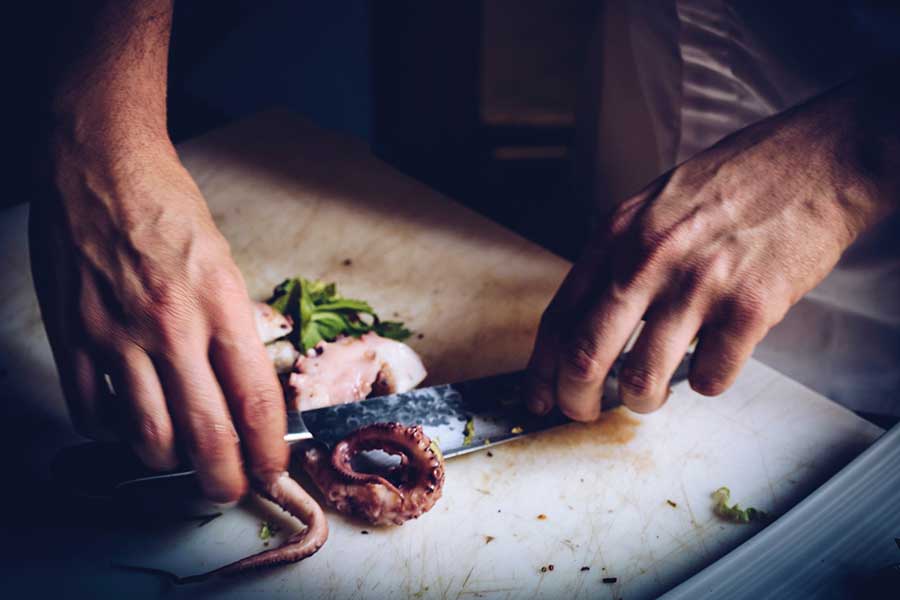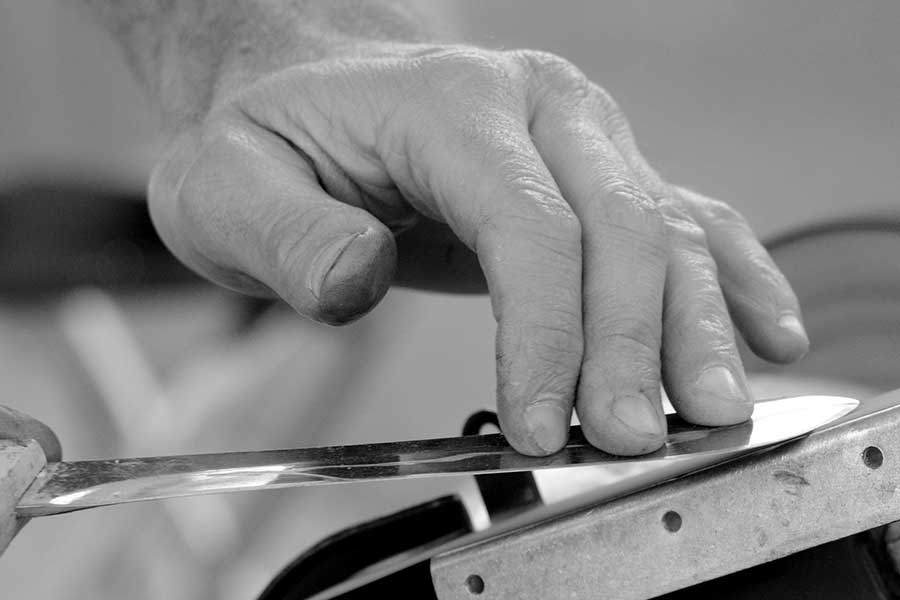Bespoke knives.
David has been making bespoke knives for many years with great attention to detail. The types of edged weapons he makes are knives, large or small machetes or even axes and the like, as well as reproductions of period-edged tools. High-strength tool steels are used and heat treated to ensure good edge-holding properties.
In addition to their unique beauty and performance, bespoke knives are often more durable and long-lasting than mass-produced knives. They are also easier to sharpen and maintain and typically hold an edge better.
The Art of Crafting Custom Blades.
Forging knives is a centuries-old craft used to create some of the most beautiful and durable knives in history. While modern knife production often relies on machines and mass production techniques, hand-forged knives remain popular among collectors, outdoor enthusiasts, and chefs who value custom-made blades’ unique qualities and superior performance.
What is Knife Forging?
Knife forging is a process of shaping and manipulating steel into a knife blade through heat and force. The forging process typically involves heating the steel to a high temperature, often over 1,000 degrees celsius, and then hammering and shaping it into the desired blade shape using various specialised tools.
Why Forged Knives?
Hand-forged knives are unique and customisable. They are crafted individually by skilled artisans who take the time to carefully shape and refine each blade. This means that no two knives are exactly the same, and each blade has its unique character and personality.
Additionally, because hand-forged knives are made with such precision and care, they often offer superior performance when compared to mass-produced knives. They are typically more durable, hold an edge better, and have a more comfortable feel.
The Forging Process
The forging process begins with the selection of high-quality steel. The type of steel used will depend on the specific requirements of the forged knife. Some common types of steel used in knife forging include carbon steel, stainless steel, and Damascus steel.
The typical method of manufacture is through the stock-removal process, which means the starting point is an already mill-rolled finished piece of high-grade steel which is then profiled to the finished shape, ground flat and then polished before being properly heat-treated in a shop kiln, to give the desired temper.
After the blade has been shaped, it is heat-treated to increase its durability and strength. This involves heating the blade to a high temperature and quickly cooling it in water or oil. The blade is then tempered, heating it to a lower temperature and then slowly cooling it to increase flexibility and reduce brittleness.
Finally, the blade is sharpened and polished, and any additional features, such as a handle or decorative details, are added. Great care is taken in the fitting of the handle guard or hilt to ensure a perfect fit between it and the blade. Handle slabs, or other designs are glued and pinned to the blade hilt. Sometimes the pommel or butt of the handle is threaded to the end of the blade. Other times it may be separately pinned for maximum strength.
Epoxy attaches the handle pieces then careful sculpting of the handle is done to make the handle fit comfortably and naturally in the hand.
Handle materials tend to be chosen from exotic hardwoods like ebony, ironbark, Tasmanian blackwood, walnut, and even lignum vitae (ironwood). Some knives have also had handles of bakelite, red deer antler and even aluminium.


